Triam Triamcinolone Injection
$84.00 – $220.00Price range: $84.00 through $220.00
| Pack Size | Price | Price / Unit | Quantity | |
|---|---|---|---|---|
| 3 Injections | $84.00 | $28.00/ unit | ||
| 5 Injections | $125.00 | $25.00/ unit | ||
| 10 Injections | $220.00 | $22.00/ unit |
Want to order in bulk / B2B price ? | Send Inquiry |


| SKU | 11464 |
| Manufacturer | Aarvi Drugs |
| Categories | Inflammation |
| Delivery Time | 10 - 14 Working Days |
| Strength | 40mg/1ml |
Introduction to Triamcinolone Injection
Triam Triamcinolone Injection is a corticosteroid medication used to treat various inflammatory and allergic conditions. It is often prescribed when other treatments such as oral medications or topical applications are not effective in managing swelling, redness, and immune-related symptoms.
This injection is commonly used for conditions such as arthritis, skin disorders, severe allergies, and certain autoimmune diseases. It helps control flare-ups and offers relief from chronic symptoms, allowing patients to manage their conditions more effectively under medical supervision.
Triam Triamcinolone Injection is manufactured by Aarvi Drugs. It is an ISO 9001:2008 and GMP certified global pharmaceutical company with involved in the areas of product marketing & manufacturing.
Uses of Triam Triamcinolone Injection
Triam Triamcinolone Injection are used to treat a variety of medical conditions characterized by inflammation. The drug belongs to the class of corticosteroids and works by suppressing the immune response and reducing inflammation. Here are some common uses of triamcinolone injections:
- Joint Disorders
- Soft Tissue Inflammation
- Skin Conditions
- Allergic Reactions
- Eye Conditions
How Does Triam Triamcinolone Injection Works?
Triamcinolone Injection (such as Triam or Triamcinolone Acetonide) works by reducing inflammation in the body. It is a corticosteroid, meaning it mimics the effects of hormones your body naturally produces in your adrenal glands to suppress the immune response and decrease inflammation.
When injected into a joint, muscle, or affected area, Triamcinolone blocks the release of substances that trigger allergic and inflammatory reactions, like prostaglandins and leukotrienes. This helps relieve symptoms such as swelling, pain, stiffness, or redness associated with conditions like arthritis, skin disorders, or allergic reactions.
Side Effects of Triamcinolone
Triamcinolone, like other corticosteroids, can have side effects. The severity and occurrence of these side effects can vary depending on factors such as the dose, duration of use, the individual’s health condition, and the method of administration (e.g., oral, topical, or injection). Here are some potential side effects associated with triamcinolone:
Common Side Effects
- Pain or Discomfort at the Injection Site
- Local Skin Changes
- Infection Risk
- Flushing or Warmth
- Temporary Increase in Pain
- Systemic Effects
Serious Side Effects
- Allergic Reactions
- Infection
- Intravascular Injection
- Joint Damage
- Hyperglycemia
- Cataract Formation and Increased Intraocular Pressure
Dosage of Triam Triamcinolone Injection
The dosage of Triam Triamcinolone Injection depends on the medical condition being treated, the severity of symptoms, and the patient’s response to the medication. For intra-articular or intramuscular use, doses usually range from 5 mg to 60 mg, administered as a single injection at intervals decided by the physician. The dosage may be adjusted depending on the patient’s age, weight, and overall health status.
How To Manage Side Effects?
- Stay calm and rested
- Apply a cold compress
- Hydrate well
- Avoid stimulants
- Monitor vital signs
- Eat light meals
- Follow doctor’s advice
Warnings & Precautions
Triam Triamcinolone Injection come with specific warnings and precautions that individuals and healthcare providers should be aware of. These are important considerations to ensure the safe and effective use of the medication. It’s essential to discuss any potential risks with a healthcare professional before starting triamcinolone injection therapy. Here are some key warnings and precautions associated with triamcinolone injection:
1. Allergic Reactions:
- Individuals with known hypersensitivity or allergic reactions to triamcinolone or other corticosteroids should not receive Triam Triamcinolone Injection. Allergic reactions can range from mild skin irritation to severe anaphylaxis.
2. Infection Risk:
- Use caution when administering Triam Triamcinolone Injection, especially in the presence of existing infections. The immunosuppressive effects of corticosteroids may mask signs of infection or worsen existing infections.
3. Systemic Effects:
- Prolonged or high-dose systemic use of triamcinolone may lead to systemic effects, including adrenal suppression, Cushing’s syndrome, and metabolic disturbances. Close monitoring and gradual tapering of the dosage may be necessary, especially with long-term use.
4. Glaucoma and Cataracts (with intraocular administration):
- Intraocular injections of triamcinolone may elevate intraocular pressure, potentially leading to glaucoma. The risk of cataract formation is also increased. Regular eye examinations are essential in individuals receiving intraocular injections.
5. Joint Damage:
- Repeated injections into the same joint may contribute to joint damage or cartilage thinning. Healthcare providers should balance the benefits of symptom relief with the potential for long-term joint effects.
6. Diabetes:
- Triamcinolone can elevate blood glucose levels, and caution is advised in individuals with diabetes. Regular monitoring of blood sugar levels is important, and adjustments to diabetes medications may be necessary.
7. Osteoporosis:
- Long-term corticosteroid use, including triamcinolone, may contribute to bone loss and increase the risk of osteoporosis. Adequate calcium and vitamin D intake, along with weight-bearing exercise, may be recommended to mitigate this risk.
Storage
- Store at a controlled room temperature between 15°C to 25°C (59°F to 77°F).
- Keep the vial in its original packaging to protect it from light.
- Do not freeze or expose to extreme heat or moisture.
- Ensure the solution is clear and free from particles before use.
- Keep out of reach of children and pets.
- Do not use past the expiration date mentioned on the label.
Frequently Asked Questions
1. How Do I Take Triamcinolone Injection Safely?
Ans. Triamcinolone Injection must be administered by a healthcare professional, usually into a muscle or joint depending on the condition. Never self-inject unless trained to do so, and always follow the dosage instructions provided by your doctor or pharmacist carefully.
2. How Long Does Triamcinolone Injection Stay In My System?
Ans. The effects of Triamcinolone Injection may last for several days to weeks depending on the dose and site of injection. Intra-articular injections, for example, may provide extended relief for joint pain. Your doctor will determine the best timing for repeat doses.
3. How Often Can I Receive Triamcinolone Injection?
Ans. The frequency of Triamcinolone Injection depends on your condition and response to treatment. Doctors generally limit repeated injections to prevent side effects such as tissue thinning or hormone imbalance. It’s important to space injections as advised by your doctor.
4. What Should I Do If I Miss A Dose Of Triamcinolone Injection?
Ans. Triamcinolone Injection is usually given as a single dose or at scheduled intervals by a healthcare provider. If you miss an appointment for your injection, contact your doctor immediately to reschedule rather than attempting to self-administer.
| Pack Size | 10 Injections, 5 Injections |
|---|---|
| Price/Unit | $22/unit, $25/unit, $28/unit |
1 review for Triam Triamcinolone Injection
Add a review Cancel reply
Related Products
No related Products Found




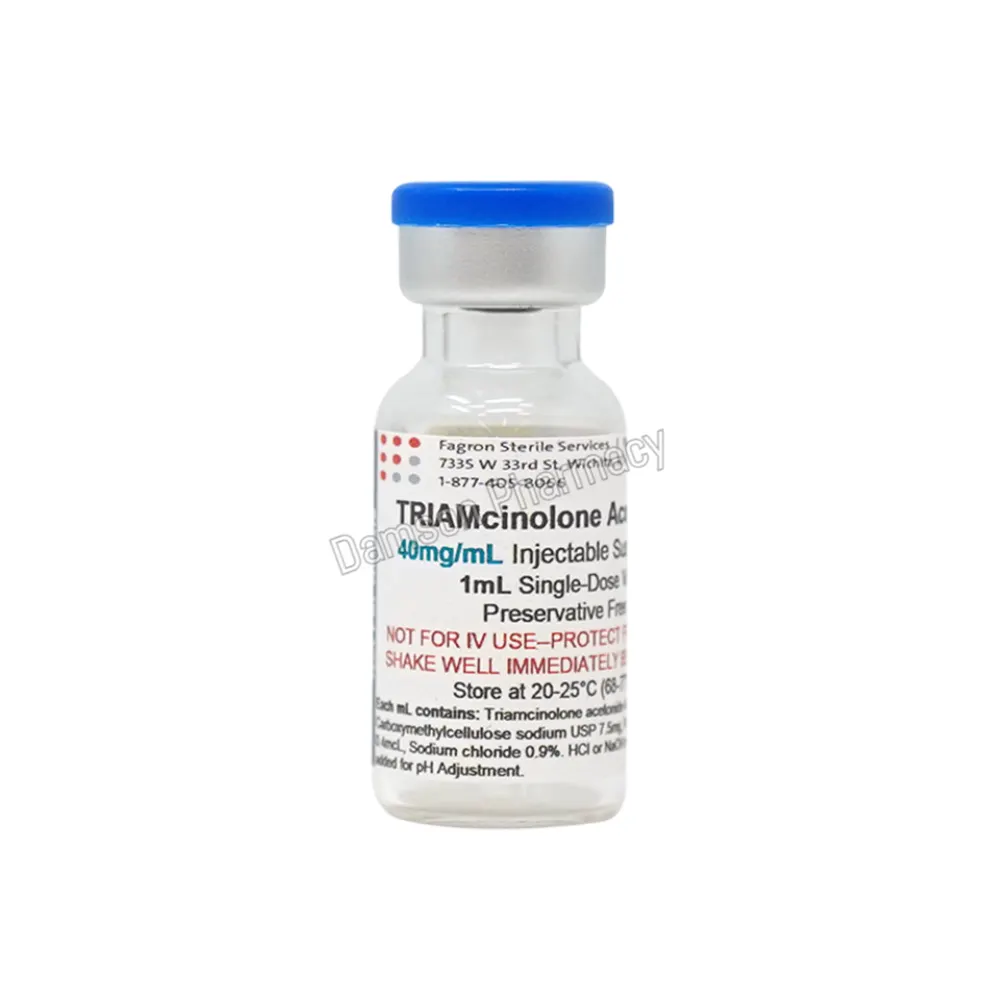
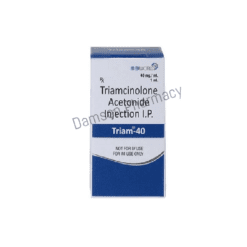
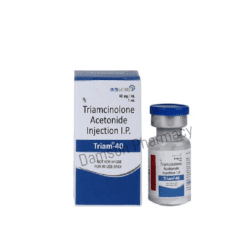
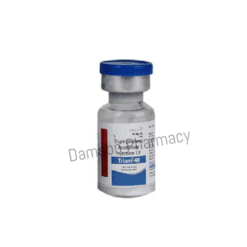
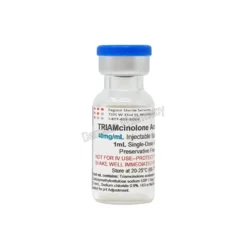
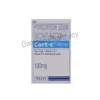
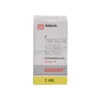
Debra Kaplan –
Low-hassle refills, good prices, no problem! Thanks Damson Pharmacy.